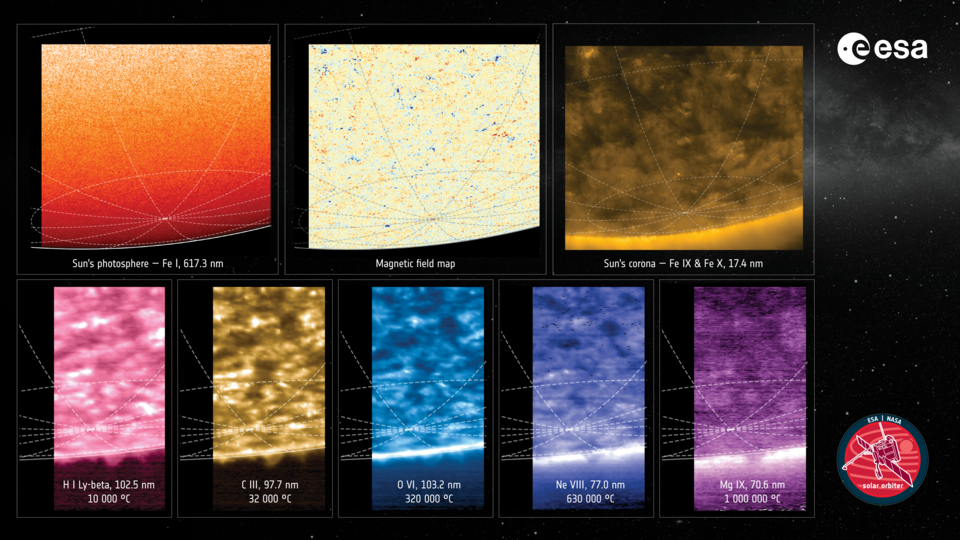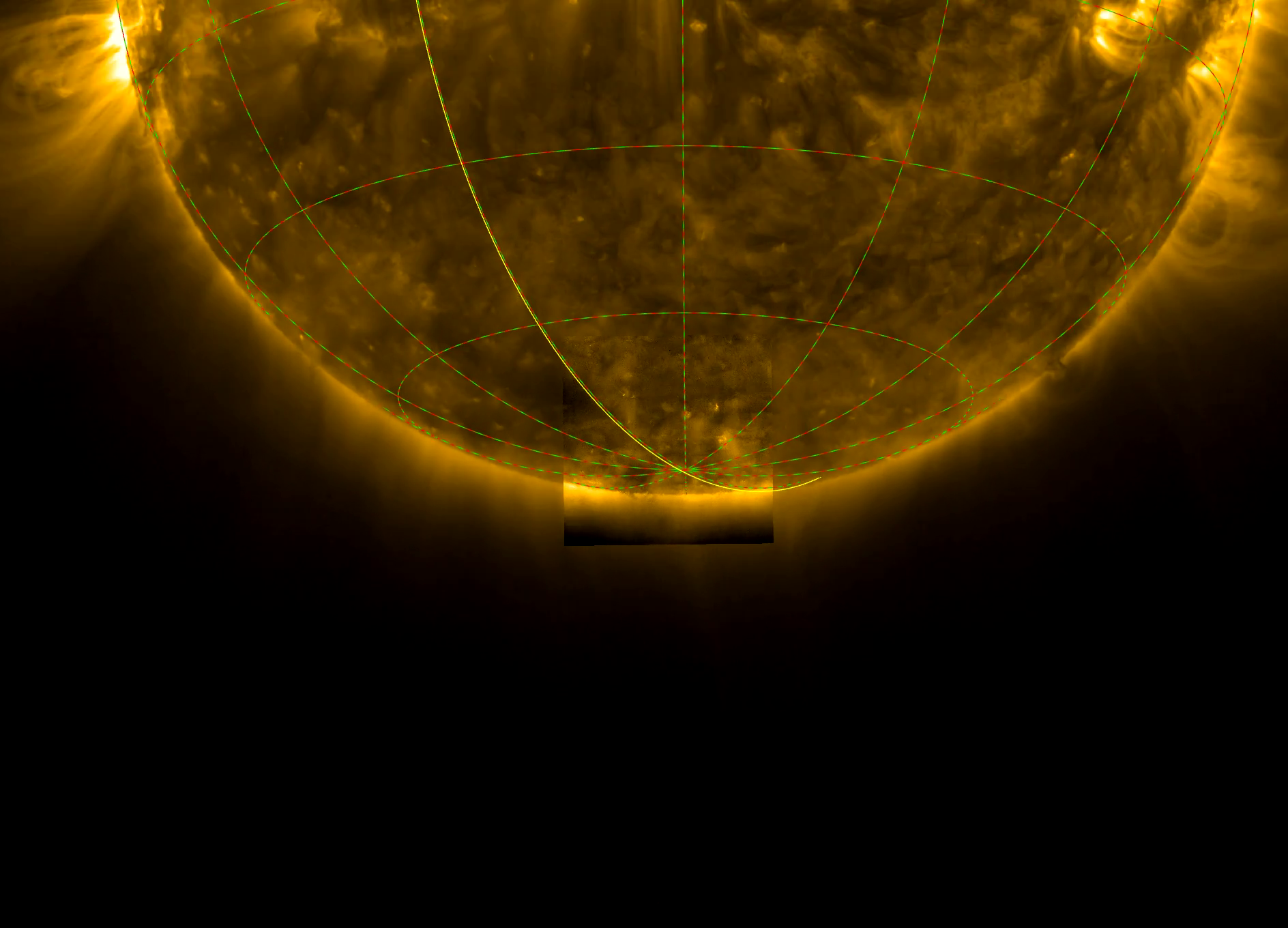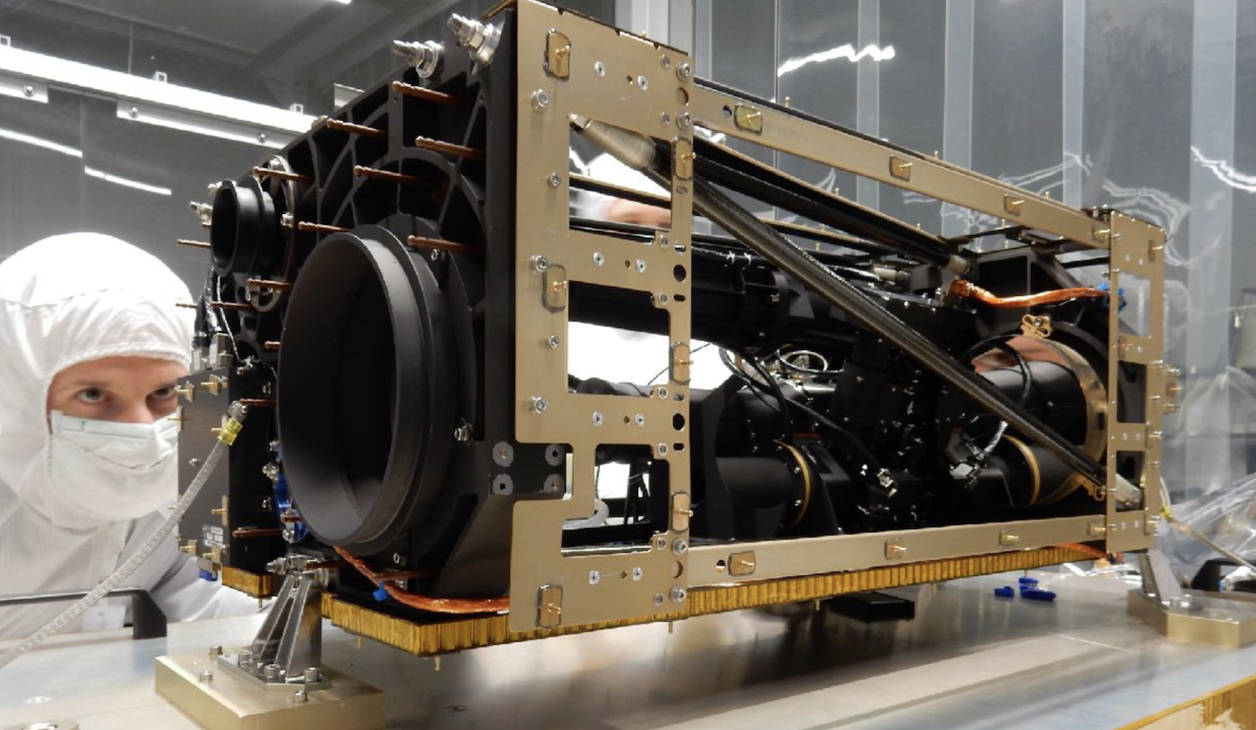First images of the Sun’s poles: a major milestone in solar exploration
The images, captured by the Solar Orbiter mission and released this week, show the south pole of our star for the first time. The Institute of Astrophysics of Andalusia (IAA-CSIC) co-leads the mission’s largest scientific instrument (SO/PHI), which was key to this pioneering observation
The Solar Orbiter mission, developed by the European Space Agency (ESA), has captured the first-ever images of the Sun’s south pole, released this Wednesday and marking a milestone in solar exploration.
Until now, all known images of our star had been taken from the plane of the ecliptic—that is, from a perspective aligned with Earth’s orbit around the Sun. Thanks to Solar Orbiter—a space probe launched five years ago with the goal of offering an unprecedented view of the Sun—our star has now been observed for the first time from outside this plane.
The Instituto de Astrofísica de Andalucía (IAA-CSIC) co-leads the largest of the ten scientific instruments on board Solar Orbiter: SO/PHI (Polarimetric and Helioseismic Imager). This instrument, designed to capture polarimetric images and conduct helioseismic studies, enables highly precise mapping of the Sun’s magnetic field—the driving force behind its activity. Thanks to SO/PHI, scientists can study in detail phenomena such as sunspots, solar storms, and the solar wind, all of which are linked to the Sun’s complex magnetic dynamics.

The SO/PHI instrument images the Sun in visible light (top left) and maps its surface magnetic field (top center). Credits: ESA & NASA/Solar Orbiter/PHI, EUI and SPICE Teams
“For the first time, we are seeing the Sun from a completely new perspective, as if we were peeking over its ‘shoulder.’ This opens the door to discovering unknown aspects of its behavior and to better understanding how it affects our planet,” explains David Orozco, researcher at the Institute of Astrophysics of Andalusia (IAA-CSIC) and co-principal investigator of the SO/PHI instrument. He adds: “This is a scientific and technological milestone in space exploration led from Spain, the result of the joint effort of the S3PC consortium—composed of the Institute of Astrophysics of Andalusia (IAA-CSIC), the National Institute for Aerospace Technology (INTA), the Canary Islands Institute of Astrophysics (IAC), the Technical University of Madrid, and the University of Valencia—as well as the University of Barcelona.”

View of the south pole of the Sun obtained by the Solar Orbiter on March 23, 2025. Credits: ESA & NASA/Solar Orbiter/EUI Team, D. Berghmans (ROB)
The images were taken on March 16 and 17, when the spacecraft was orbiting the Sun at an inclination of 15 degrees below the solar equator, just days before reaching its current maximum inclination of 17 degrees. From this privileged vantage point, three of the instruments on board—including SO/PHI—managed to capture the Sun’s south pole for the first time with unprecedented detail. While SO/PHI captures images of the Sun in visible light and maps the magnetic field at its surface, the other two instruments, EUI and SPICE, provide complementary information about the solar atmosphere at different wavelengths, enabling the study of the corona—the Sun’s outermost layer—which reaches temperatures of up to several million degrees Celsius, far hotter than its surface.
Jose Carlos del Toro Iniesta (IAA-CSIC), co-principal investigator of the SO/PHI instrument at the time of its launch, notes: "The observation of the poles from new angles, joins the other unprecedented features of the mission: the approach to the Sun with remote sounding instruments up to one third of the distance between the Earth and the Sun, and the measurement of the properties of the back face of our star. It is a privilege to be a significant part of this mission."

SO/PHI (Polarimetric and Helioseismic Imager) instrument, co-led by IAA-CSIC. SO/PHI optical unit before during the final stages of assembly.
In the coming years, Solar Orbiter will continue to increase the inclination of its orbit by using Venus’s gravity: as the probe flies close to the planet, it uses its gravitational pull as a kind of “slingshot” to alter its trajectory. Thanks to these gravity-assist maneuvers, Solar Orbiter will be able to observe the Sun from increasingly higher angles and obtain ever more detailed images of its polar regions, which have until now remained virtually unseen.
Solar Orbiter gets world-first views of the Sun’s poles. Credit: ESA
- Solar Orbiter gets world-first views of the Sun’s poles
- https://www.esa.int/Science_Exploration/Space_Science/Solar_Orbiter/Solar_Orbiter_gets_world-first_views_of_the_Sun_s_poles
- José Carlos del Toro - jti@iaa.es
- David Orozco - orozco@iaa.es
- Instituto de Astrofísica de Andalucía (IAA-CSIC)
- Unidad de Divulgación y Comunicación
- Amanda López – alm@iaa.es
- Emilio García – garcia@iaa.es - 649 407 445 (vía whatssap)
- Celia Navas - navas@iaa.es
- https://www.iaa.csic.es
- https://divulgacion.iaa.csic.es

